VICTORIA STREET HERITAGE WALK

VICTORIA STREET
Until the early part of the 19th century, the Markeaton Brook was an open waterway that flowed through Derby. Before it was culverted in the 1830s, it was navigable for small boats as far as Brook Walk. For the delivery and collection from the mills in the area. The problems were that the brook flooded and also all manner of foul-smelling waste was deposited in the water. The section linking St James’ Bridge, at the end of St James’ Street and St. Peter’s Bridge at the intersection of Peter’s Street and the Corn Market was known as Brookside. In addition to St Peter’s Bridge, a further footbridge led to the County Gaol, which had been built across the brook between St Peter’s Street and the Corn Market. This was known as the Gaol Bridge.

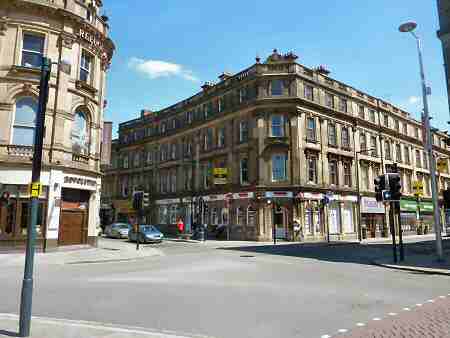
Culvert
In 1837, the brook was covered with a brick culvert and by 1841, it had been renamed Victoria Street. Culverting of what we now know as, Albert Street and The Strand followed later. The creation of these new streets brought benefits to the local community. This led to the building of some extremely fine Victorian buildings. When throughout most of the 20th century, Victoria Street was a prime shopping location. Although Markeaton Brook was lost to sight when culverting took place, St Peter’s Bridge was not destroyed. When works were undertaken in October 2004 to strengthen the culvert the bridge reappeared. This caused a great deal of interest locally, with some people even comparing Derby to Venice.
St James’ Street
Following the culverting of Markeaton Brook, St James Lane was widened and renamed St James’ Street. It soon became an elegant shopping thoroughfare and a stopping place for public transport. The street closed in the 1990s to all-through traffic and the Corn Market end was paved. In 1869 the General Post Office occupied the corner site with Victoria Street. Before being moved further along Victoria Street, then moving again to Babington Lane, in May 2013. The 1869s Post Office’s name is still visible on the front.
THE WALK
An enjoyable walk with plenty of interest both for the newcomer and for those people who know Derby well but like to indulge in a bit of nostalgia. A visit to the Museum and Art Gallery, Pickford’s House Museum and Derby Gaol Museum are all highly recommended.
LOOK OUT FOR
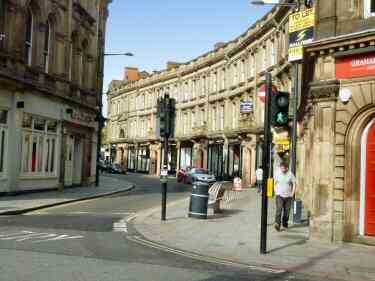
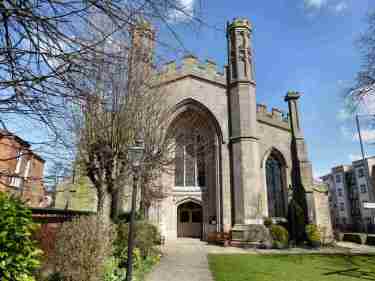
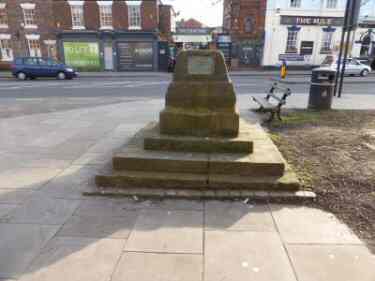
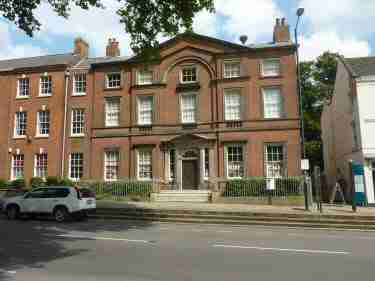
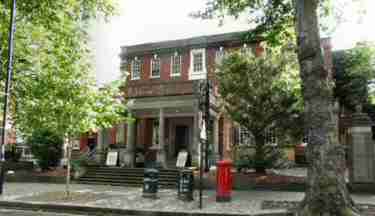
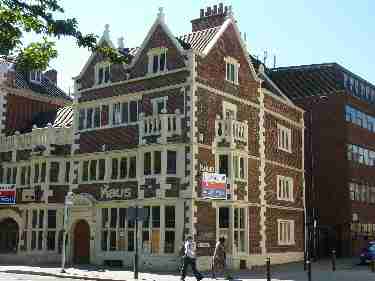
THE ROUTE
The walk starts at the intersection between St Peter’s Street and the Corn Market. Where St Peter’s Bridge stood before Markeaton Brook was culverted in the 1830s. It was navigable for small boats as far as Brook Walk for delivery and collection from the mills in the area. The problems were that the brook flooded and also all manner of foul-smelling waste was deposited in the water.
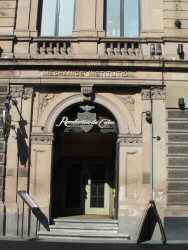
2. Head across Victoria Street past the old post office on the corner of St James’ Street, which was widened after Markeaton Brook was culverted. After that, it soon became an elegant shopping thoroughfare and a stopping place for public transport.
3. Continue along The Strand where the shop frontages have been tastefully refurbished. After passing the entrance to the Museum and Art Gallery which holds a collection of Joseph Wright’s most famous paintings. Keep straight ahead along Bold Lane and then Jury Street. When the road curves to the right, walk straight ahead down Willow Row to the left of the Joseph Wright Centre.
- Cross the inner ring road and turn left for a few yards. Then right to continue by Markeaton Brook which leaves its culvert at this point. On reaching Bridge Street turn left and, in a few yards, go to the right down Mill Street past St John’s Church which in design is rather similar to King’s College Chapel, Cambridge.
5. At the end of the street, turn left and walk along Brick Street going to the left at the end. Here you will find, a Headless Cross without a shaft and of medieval origin. During outbreaks of the plague, all public gatherings were discontinued. Foodstuffs were left near the cross by local farmers, who would vigorously chew tobacco while depositing their produce, as this was considered to help prevent catching the disease. The hollow in the top of the stone was filled with vinegar. This acted as a form of disinfectant for the coins that were immersed by the starving citizens of Derby, in payment for food. Continue down the lefthand side of the street where the Derby Gaol Museum is situated, the main entrance is to the rear off Agard Street.
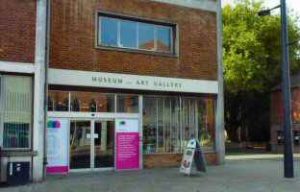
6. Near the bridge is Pickford’s House Museum. It was built by eminent architect Joseph Pickford between 1769 and 1770 for his occupation. The façade was designed to impress clients who might well only see the front of the house. For those who entered the premises, they would find the hall richly decorated with ornamental plasterwork and probably be taken into the house’s finest room, the saloon. Pass under Friargate Bridge built for the Great Northern Railway
7. Keep straight on over the inner ring road by the Friary Hotel which was built on part of the grounds that once belonged to a Dominican Monastery. Here a large friary was erected with approximately 16 acres of parkland featuring fishponds, a chapel and other buildings. Maintain the same direction where Friar Gate ends and The Wardwick starts.

- On the right one of Derby’s most eye-catching buildings, the Derby Free Library and Museum is no longer used as a library. Further along, the Mechanics’ Institute was founded by Joseph Strutt in 1825. There were classes for reading, writing, arithmetic, drawing, music, French and chemistry for adults. A class also met weekly to discuss literary and scientific subjects. During its lifetime the Mechanics’ Institute had several famous visitors including, Charles Dickens the author and actor and Franz Liszt, the Hungarian-born pianist and composer.
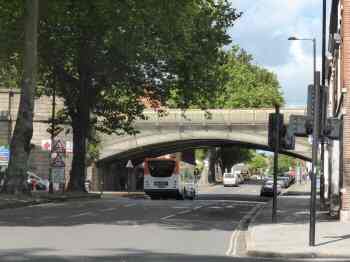
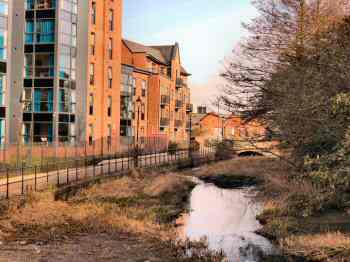
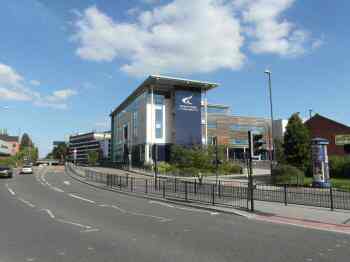
REFRESHMENTS
The Friary is situated on Friar Gate to the east of the inner ring road. For more information telephone 01332 253711.
The Coffee House at Derby Museum and Art Gallery is located in the beautiful ceramic gallery. For more information visit: www.derbymuseums.org/museum-and-art-gallery/the-coffee-house or telephone 01332 641901.
